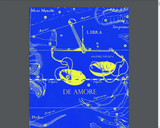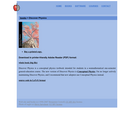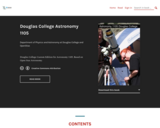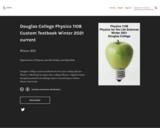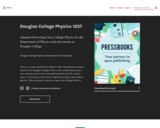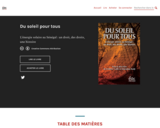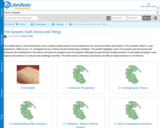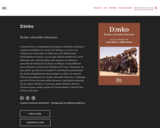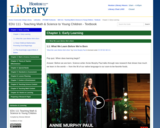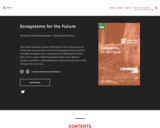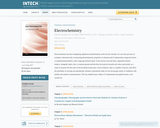Short Description:
Disruptive Technologies With Applications in Airline, Marine, Defense Industries is our fifth textbook in a series covering the world of Unmanned Vehicle Systems Applications & Operations On Air, Sea, and Land. The authors have expanded their purview beyond UAS / CUAS / UUV systems that we have written extensively about in our previous four textbooks. Our new title shows our concern for the emergence of Disruptive Technologies and how they apply to the Airline, Marine and Defense industries. Emerging technologies are technologies whose development, practical applications, or both are still largely unrealized, such that they are figuratively emerging into prominence from a background of nonexistence or obscurity. A Disruptive technology is one that displaces an established technology and shakes up the industry or a ground-breaking product that creates a completely new industry.That is what our book is about. The authors think we have found technology trends that will replace the status quo or disrupt the conventional technology paradigms.The authors have collaborated to write some explosive chapters in Book 5:Advances in Automation & Human Machine Interface; Social Media as a Battleground in Information Warfare (IW); Robust cyber-security alterative / replacement for the popular Blockchain Algorithm and a clean solution for Ransomware; Advanced sensor technologies that are used by UUVs for munitions characterization, assessment, and classification and counter hostile use of UUVs against U.S. capital assets in the South China Seas. Challenged the status quo and debunked the climate change fraud with verifiable facts; Explodes our minds with nightmare technologies that if they come to fruition may do more harm than good; Propulsion and Fuels: Disruptive Technologies for Submersible Craft Including UUVs; Challenge the ammunition industry by grassroots use of recycled metals; Changing landscape of UAS regulations and drone privacy; and finally, Detailing Bioterrorism Risks, Biodefense, Biological Threat Agents, and the need for advanced sensors to detect these attacks.
Long Description:
Disruptive Technologies With Applications in Airline, Marine, Defense Industries is the authors fifth textbook in a series covering the world of Unmanned Vehicle Systems & Operations On Air, Sea, Land; Counter Unmanned Aircraft Systems Technologies and Operations; Unmanned Aircraft Systems in the Cyber Domain: Protecting USA’s Advanced Air Assets, 2nd edition; and Unmanned Aircraft Systems (UAS) in the Cyber Domain Protecting USA’s Advanced Air Assets, 1st edition; have seen considerable global recognition in the field. (Nichols R. K., et al., 2020) (Nichols R. , et al., 2020) (Nichols R. , et al., 2019) (Nichols R. K., 2018)
The authors have expanded their purview beyond UAS / CUAS / UUV systems which they have written extensively about in our previous four textbooks. Our new title shows our concern for the emergence of Disruptive Technologies and how they apply to the Airline, Marine and Defense industries.
There is a difference between emerging technology trends and disruptive ones. Emerging technologies are technologies whose development, practical applications, or both are still largely unrealized, such that they are figuratively emerging into prominence from a background of nonexistence or obscurity. Some sources say that emerging technologies are taking over the world by a storm and if misused, it could turn out to be our worst enemy.
Disruptive technology is one that displaces an established technology and shakes up the industry or a ground-breaking product that creates a completely new industry. (Rouse, 2021)
That is what our book is about. The authors think they have found technology trends that will replace the status quo or disrupt the conventional technology paradigms.
The authors have written some explosive chapters in their Book 5. Dr. Hans Mumm has written about the Advances in Automation & Human Machine Interface. Wayne Lonstein, JD has given the reader a solid look at Social Media as a Battleground in Information Warfare (IW). CEO Bart Shields has delivered a viable, less risky, more robust cyber-security alterative / replacement for the popular Blockchain Algorithm and a clean solution for Ransomware. Professor Randall K. Nichols has written about the Advanced Sensor Technologies that are used by UUVs for munitions characterization, assessment, and classification. He reports on their counter hostile use of UUVs against U.S. capital assets in the South China Seas. In a second chapter, Professor Nichols has challenged the status quo and debunked the climate change fraud with verifiable facts. In his third chapter, he explodes our minds with Nightmare Technologies that if they come to fruition may do more harm than good.
Dr. Mark Jackson has written authoritatively about Propulsion and Fuels: Disruptive Technologies for Submersible Craft Including UUVs. CEO Randall Mai has penned a chapter to Challenge the Ammunition Industry by Grassroots use of Recycled Metals. Captain John Paul Hood writes about the changing landscape of UAS regulations and drone privacy laws. 2021 will prove to be most challenging for owners and manufacturers of UAS. CEO & Dr. Suzanne Sincavage and Professor Candice Carter have teamed up to scare the pants off of us – especially during the COVID-19 pandemic – by detailing Bioterrorism Risks, Biodefense, Threat Agents and the need for advanced sensors to detect these attacks. Their chapter is truly a wake-up call.
Word Count: 93837
ISBN: 978-1-944548-34-6
(Note: This resource's metadata has been created automatically by reformatting and/or combining the information that the author initially provided as part of a bulk import process.)


